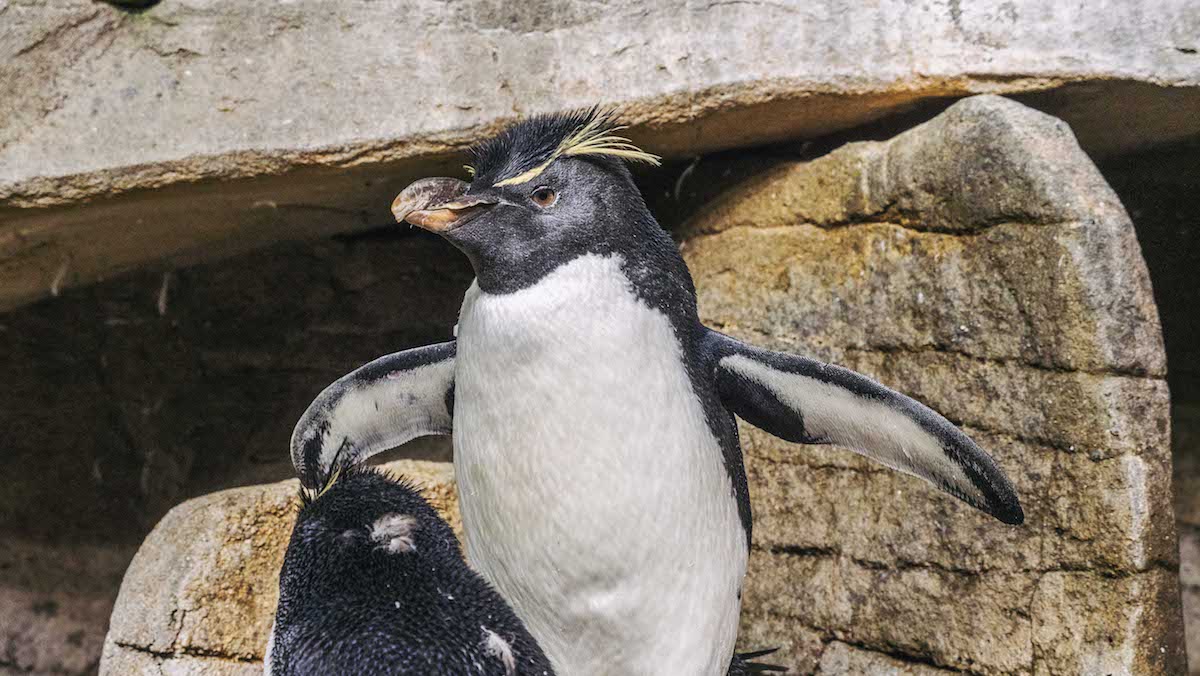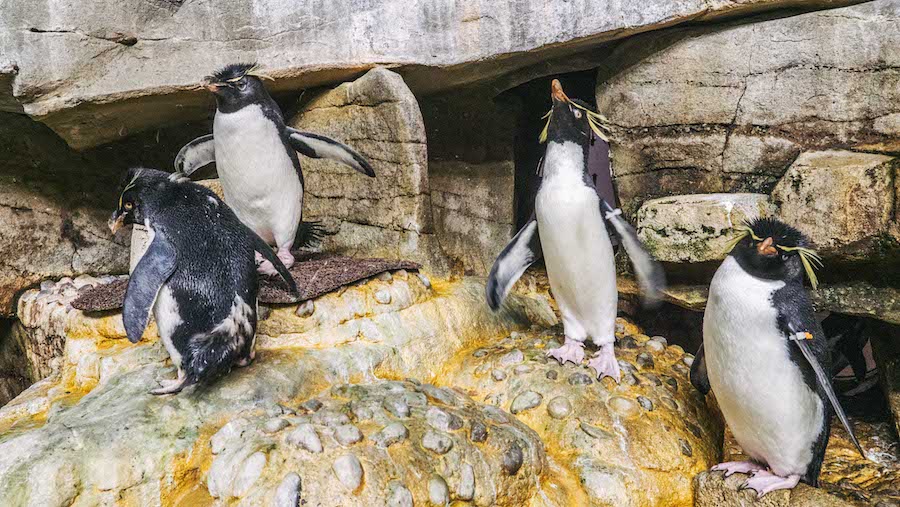The call of a penguin is inscrutable. It can sound like the braying of a donkey, the nasally honk of a goose, or a very bored kid blowing a kazoo. Inside the Shedd Aquarium’s penguin enclosure, home to 31 of these Antarctic birds, things can get pretty deafening.
“Usually they’re communicating with each other, but when they vocalize at us, I like to take it as a compliment,” says Christy Sterling, Shedd’s supervisor of penguins and otters. “Like, We’re excited to see you! But it’s hard to say when you don’t know penguin language.”
Most humans might crave the quiet of an early morning, but here, feathered frenzy is the norm. Around 7 a.m., early birds rise for morning swims and get ready to greet trainers and platters of fish. This noisy ritual is the typical start of a day in the life of a Shedd penguin, which is filled with an envious amount of playtime and pampering.
First up: a breakfast of long, gray capelin and small, silver-blue herring — just some of the 750-pounds of restaurant-quality seafood the aquarium serves its myriad residents daily. The enclosure shelters two species of penguin: Magellanics, which have white, “C”-shaped markings on their heads, and rockhoppers, named for their preferred method of getting around on land. The groups are trained to eat in separate areas, but like kings, everyone can eat as much as they want.
“They self-regulate so we don’t have to weigh out diets for each individual bird,” Sterling says. “But some definitely have really good appetites, and we’ll keep an eye on those.” She points out three-year-old Diego, one rockhopper who’s known to be a tad assertive during mealtime and cut his peers in line for food.
For the most part, though, the penguins are well behaved, polite creatures. That’s because once filled up on fish, they often attend training sessions in small groups, which keeps them mentally and physically stimulated. They reach their classroom via a large blue cart on wheels — or, as trainer Amber Dawn calls it, their Uber.
Known as “encounters,” these lessons are open to the aquarium’s visitors. You can watch as penguins exercise their beaks by picking up or pushing around dog and baby toys. Trainers will also observe good and bad behaviors, reinforcing the former, and get individual birds acquainted with the humans around them.
“This sets them up for success when they see the vet, which is probably someone they’re not as familiar with,” Dawn says. “So when they go, it’s not so scary.”

Penguins also get in their Uber when they visit the clinic for an annual routine check-up, where doctors check their eyes, ears, nose, mouth, feet, and cloaca, and listen to their lungs for respiratory infections. Sometimes birds get blood drawn or get x-rayed, which involves plopping them in a clear tube during the process to minimize stress.
Then there’s the special treatment of laser therapy for the seniors who have arthritis. Birds like Esmeralda, a 23-year-old Magellanic, have their problem areas scanned by a non-invasive laser beam that stimulates blood flow to reduce inflammation.
“It causes low heat, but nothing that can be harmful,” says Dr. Pamela Govett, who works with the aquarium.
Esmeralda is just one of a number of the Shedd’s aging penguins. The four oldest are rockhoppers — Drake, Magdalena, Pebbles, and Wellington — who celebrated their 31st birthdays last December. That’s a milestone in penguin world: 31 is more than double the lifespan of your average rockhopper in the wild, which tends to live between 10 and 15 years. The Shedd goes all out to celebrate hatchdays. Trainers wear party hats and make signs, birthday-themed frozen treats, and ice blocks for the birthday birds to slide down.
All things considered, it’s no wonder there’s often so much hoopla in the penguin colony.
“We give them all the food they need, they don’t have to worry about predators, and there are vets on staff all the time,” Sterling says. “They can live a pretty long time here.”



